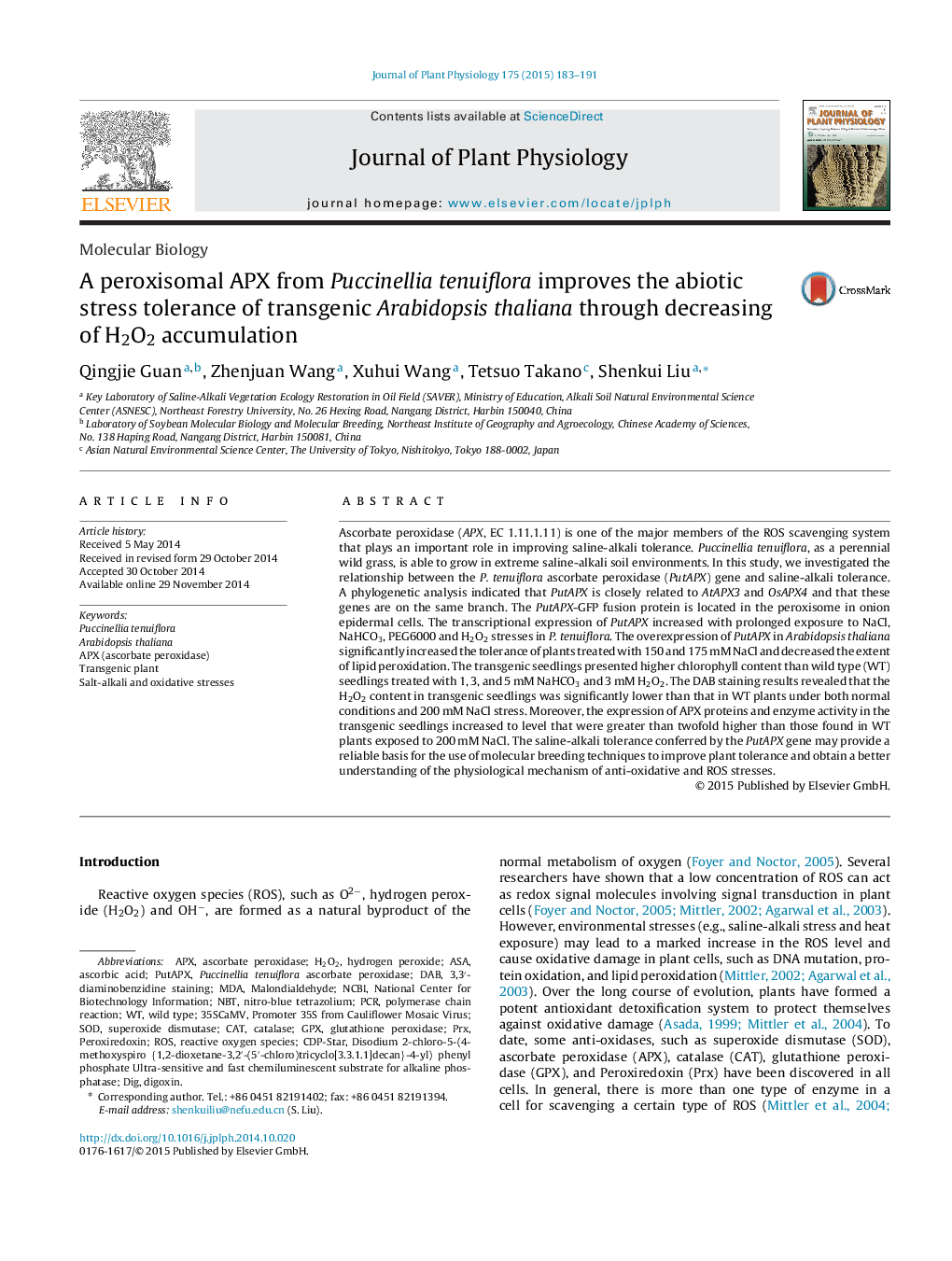| Article ID | Journal | Published Year | Pages | File Type |
|---|---|---|---|---|
| 2055743 | Journal of Plant Physiology | 2015 | 9 Pages |
Ascorbate peroxidase (APX, EC 1.11.1.11) is one of the major members of the ROS scavenging system that plays an important role in improving saline-alkali tolerance. Puccinellia tenuiflora, as a perennial wild grass, is able to grow in extreme saline-alkali soil environments. In this study, we investigated the relationship between the P. tenuiflora ascorbate peroxidase (PutAPX) gene and saline-alkali tolerance. A phylogenetic analysis indicated that PutAPX is closely related to AtAPX3 and OsAPX4 and that these genes are on the same branch. The PutAPX-GFP fusion protein is located in the peroxisome in onion epidermal cells. The transcriptional expression of PutAPX increased with prolonged exposure to NaCl, NaHCO3, PEG6000 and H2O2 stresses in P. tenuiflora. The overexpression of PutAPX in Arabidopsis thaliana significantly increased the tolerance of plants treated with 150 and 175 mM NaCl and decreased the extent of lipid peroxidation. The transgenic seedlings presented higher chlorophyll content than wild type (WT) seedlings treated with 1, 3, and 5 mM NaHCO3 and 3 mM H2O2. The DAB staining results revealed that the H2O2 content in transgenic seedlings was significantly lower than that in WT plants under both normal conditions and 200 mM NaCl stress. Moreover, the expression of APX proteins and enzyme activity in the transgenic seedlings increased to level that were greater than twofold higher than those found in WT plants exposed to 200 mM NaCl. The saline-alkali tolerance conferred by the PutAPX gene may provide a reliable basis for the use of molecular breeding techniques to improve plant tolerance and obtain a better understanding of the physiological mechanism of anti-oxidative and ROS stresses.
